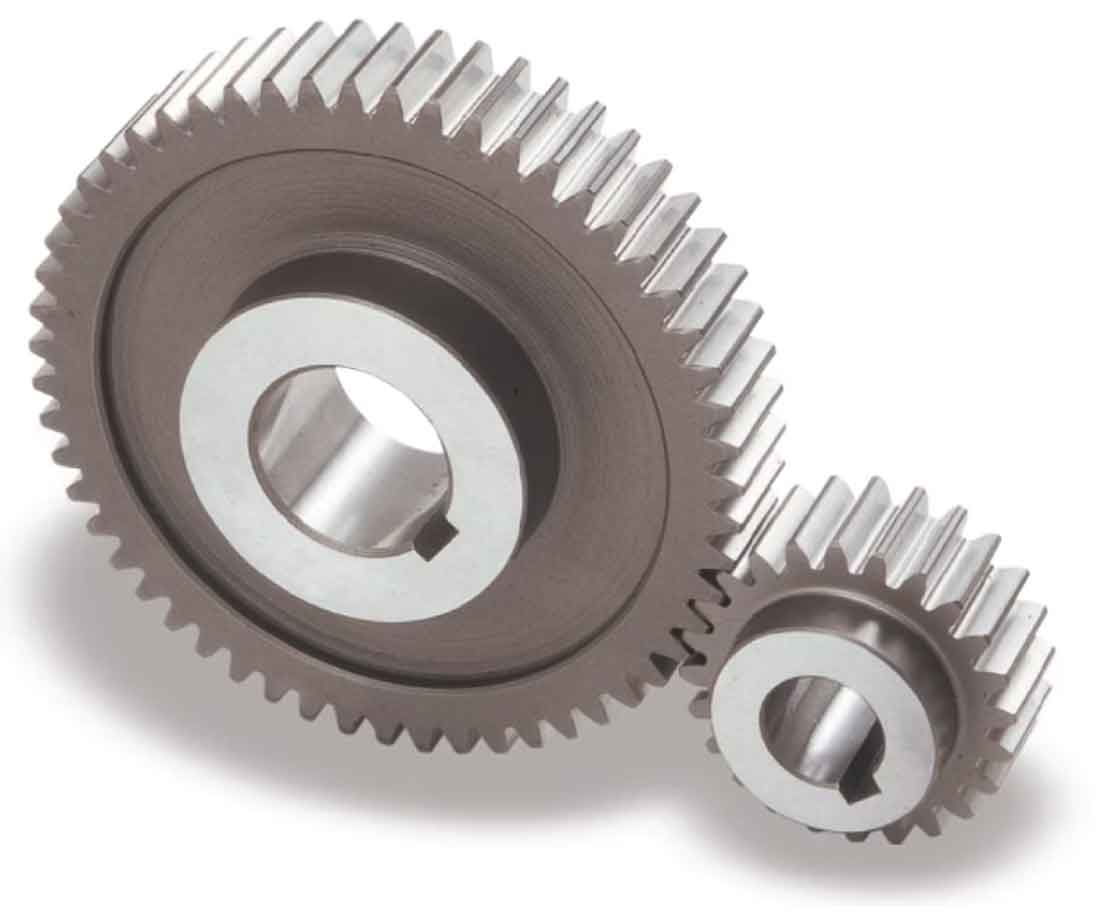
Choosing the right type of gear, whether spur gears or helical gears, depends on the specific requirements of the application and the desired performance characteristics. Both types have their advantages and limitations, making each more suitable for certain situations. Here’s a comparative analysis of spur gears vs. helical gears to help you make an informed decision:
Spur Gears:
- Advantages:
- Simplicity: Spur gears have a straightforward design with straight teeth, making them easy to manufacture and maintain.
- Cost-Effective: Due to their simplicity, spur gears are generally more cost-effective to produce compared to helical gears.
- High Efficiency: When properly lubricated and aligned, spur gears offer high efficiency in transmitting power between parallel shafts.
- Ideal for Low-Speed Applications: Spur gears are well-suited for low-speed applications, such as in clocks and low-speed machinery.
- Limitations:
- Noise and Vibration: Spur gears can produce higher levels of noise and vibration due to the instantaneous engagement of teeth during meshing.
- Axial Thrust: Spur gears generate axial thrust due to their straight teeth design, requiring thrust management in the system.
- Limited Speed Range: Spur gears may have limitations at high speeds due to potential tooth deflection and increased noise levels.
Helical Gears:
- Advantages:
- Smoother and Quieter Operation: Helical gears have an inclined tooth profile, leading to gradual tooth engagement and reduced impact, resulting in smoother and quieter operation.
- Higher Load-Carrying Capacity: The inclined tooth design of helical gears allows for more teeth to be in contact simultaneously, distributing the load over a larger area, making them more suitable for higher loads.
- Higher Efficiency at High Speeds: Helical gears perform well at high speeds due to their gradual tooth engagement, which reduces noise and vibration.
- Minimized Axial Thrust: Helical gears can be designed to counteract axial thrust, making them suitable for bidirectional applications without additional thrust management.
- Limitations:
- More Complex Design: Helical gears have a more complex design compared to spur gears, which can lead to higher manufacturing and maintenance costs.
- Potential Thrust Load: Although helical gears can be designed to minimize axial thrust, it can still be present and may require additional measures in certain applications.
Choosing the Right Gear for Your Application:
- Select Spur Gears When:
- Simplicity and cost-effectiveness are crucial.
- Low-speed applications with minimal noise and vibration are acceptable.
- Space constraints require a more compact design.
- Select Helical Gears When:
- Smooth and quiet operation is essential.
- Higher load-carrying capacity and efficiency at high speeds are required.
- Bidirectional operation is needed with minimal axial thrust.
Ultimately, the choice between spur gears and helical gears depends on the specific application’s requirements, performance needs, and budget considerations. Consider factors such as speed, load, noise tolerance, and space constraints when making the decision. In some cases, a combination of both gear types in a gearbox can be used to leverage their respective strengths for optimized performance.
